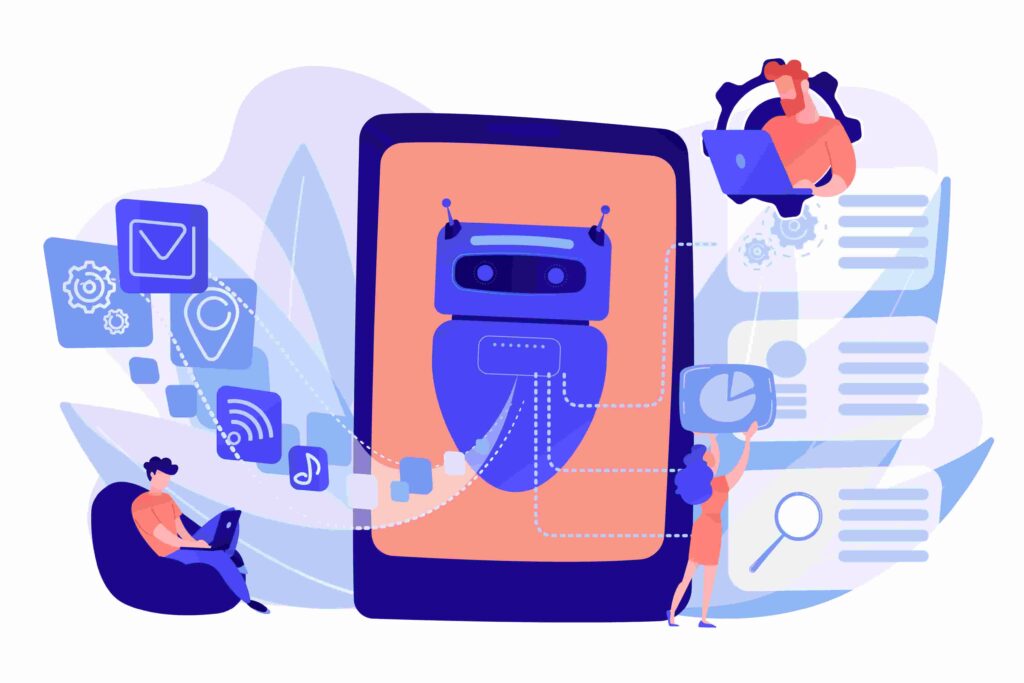Cloud computing is a modern technological solution that offers several advantages, including convenient file access/management and increased data protection.
Cloud computing uses remote servers to store data, instead of a local server or a PC. For these and other reasons, cloud storage is highly recommended for both individual and corporate users. Cloud computing also allows remote data processing and use of multiple software solutions without having to install them on a PC.
In this article, you will understand how to benefit from such innovation and safely use this technological tool.
How does cloud computing work?
Before using cloud computing resources to ensure information security, it is important to understand how this tool works. Cloud computing uses a remote infrastructure that is accessed by the internet.
Then, to access stored data, the system user needs a device to connect with this network. In most cases, any electronic device such as a smartphone, tablet or computer can be used, as long as it is connected to the internet.
Consequently, cloud computing doesn’t require access from a physical location, expanding the possible uses of cloud computing, as it goes beyond geographic barriers. This is one of the reasons why this technology has become widely used in companies that adopt home office or hybrid work models.
Also, despite allowing remote access with more freedom, cloud computing has strong access control. Only authorized persons using passwords can connect to sections with sensitive or confidential files, thanks to encryption systems and information security applications implemented in cloud computing solutions.
What are the main types of services offered?
To better understand the essential processes that ensure system security, you should learn more about the different types of cloud computing options, which are discussed below!
SaaS
Software as a Service (SaaS) is a model in which the user must manage the system license, but with access to limited resources upon payment of a fixed amount or a monthly fee.
Then, all information stored in the software is available to the customer only, who can choose what to do, how to save files, host sites and applications, etc.
PaaS
Platform as a Service (PaaS) is a cloud computing model for the creation of cloud infrastructure systems. In this environment accessed by the internet, it is possible to develop and perform maintenance on software and applications, among other uses.
IaaS
There is also Infrastructure as a Service (IaaS). In this case, the user hires a package that acts as hardware, although it is still in the cloud environment. Servers can store, display, and process a lot of data with cloud computing.
How to increase the security levels of cloud computing?
Regardless of the cloud computing model selected, some precautions will help ensure increased security when using the solution. These practices should be highlighted among users, especially within companies that use cloud computing solutions on a daily basis. See below some important tips.
Awareness and protection in the data migration process
The first step is to take care of the data migration process. Awareness is key to understanding how systems work and ensuring safe migration to the cloud environment so that no data loss occurs during the process.
Review of stored data
After the migration process is completed, it is important to check stored data for any inconsistency, according to the user settings. Therefore, time should be dedicated to a detailed data review.
Infrastructure setting standards defaults
With your data stored in a cloud environment, you can personalize it with settings according to your goals. The standards of most systems are customizable, allowing a strategic application of this tool.
Data encryption
Investing in and enabling encryption technologies in cloud computing is important to prevent intrusion, data loss, and access by unauthorized persons. This is a set of information that limits the software connection to those systems and people that are able to interpret the particular code generated.
Two-factor authentication
Two-factor authentication is another security procedure that prevents unauthorized persons from accessing the system. In this case, a new step is added during user login, which requires user to confirm his/her identity. This process can be performed with different methods, such as biometric system, additional password, SMS or email sent to user, among others.
As seen in this article, cloud computing is a very useful technological solution for the daily routine of individual and corporate users, considering that it allows the use of intelligent and safe resources through the internet. Investing in this tool is an option to protect your data and modernize your operations.
Did you like this article? Follow Milvus on Instagram, Facebook, LinkedIn, and YouTube to see more information about data security.








